Content

AVE trains: An Overview
As there are now multiple types of AVE trains operating within and to/from Spain, this overview explains what the differences are; and what they have in common.
Share
At a Glance
Travel Pass Supplement
Rail Pass Reservation Fees
Reservations
Compulsory
Time of Day
Day
Catering
Food services available
Bistro (bar food and take away meals)
Accessibility
Accessing the train
Wheelchair Spaces
Train Specification
Attributes of the train
High Speed (total journey)
Has a Conductor
Country
Which country these trains operate in.
Spain
Travel Passes
Eurail
Interrail
AVE services are operated by Renfe, the national rail company in Spain.
Note that there are now five types of high speed train train used for AVE services - you can find more specific info on each of these below.
They travel up to 320 km/h on multiple high speed lines at Spain - which puts them at joint No.1 on a list of Europe's fastest trains
Two things set the AVE services apart from the other services which use the Spanish high speed speed lines:
1: Aside from the relatively short sections of route, which link some stations to the high speed route, the AVE services spend the entire length of their journeys travelling on the high speed lines;
So they don't branch off and switch to the 'classic' older lines in order to reach destinations beyond the high speed lines, or away from a high-speed route.
2: Unlike the Avant services, which also only use the high-speed lines, the AVE services are larga-distancia services, so they either;
- travel between Madrid and destinations in north, east and south Spain,
- travel between north and east Spain on a route which crosses Madrid,
- travel between south and east Spain on a route which passes close by Madrid.

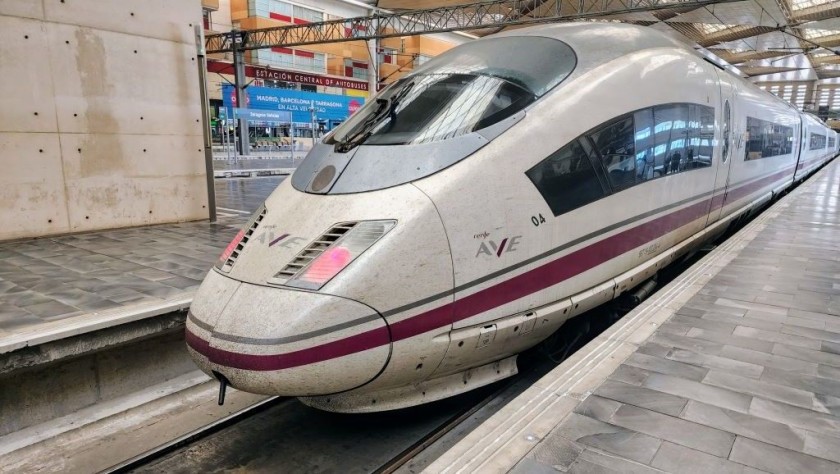
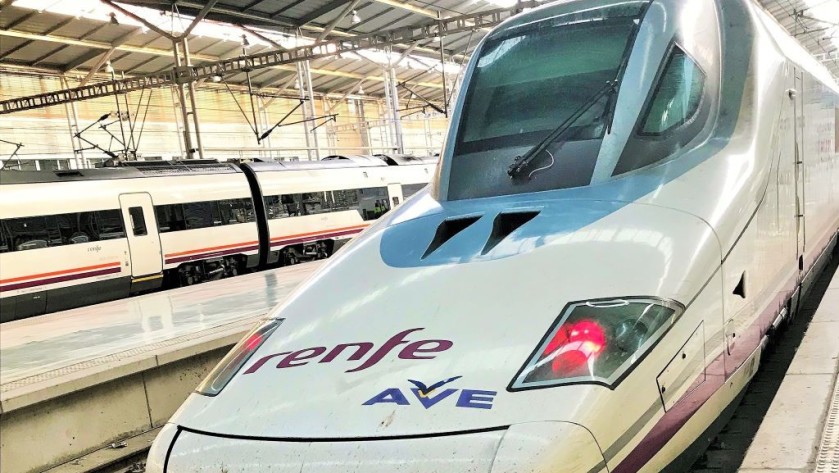
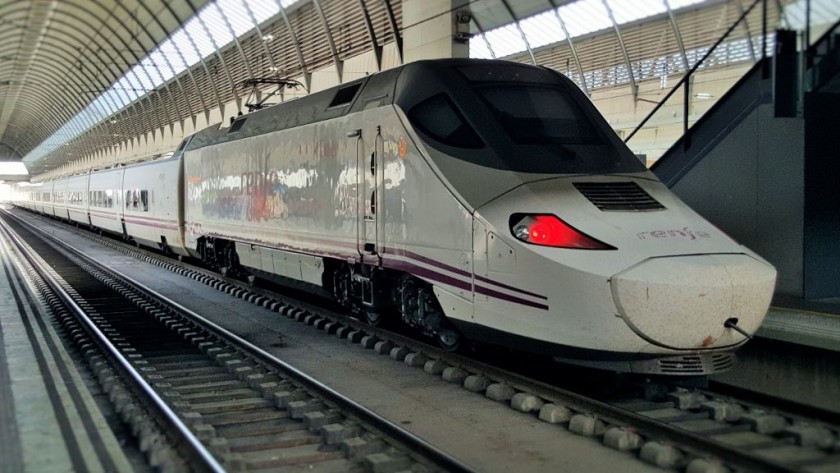

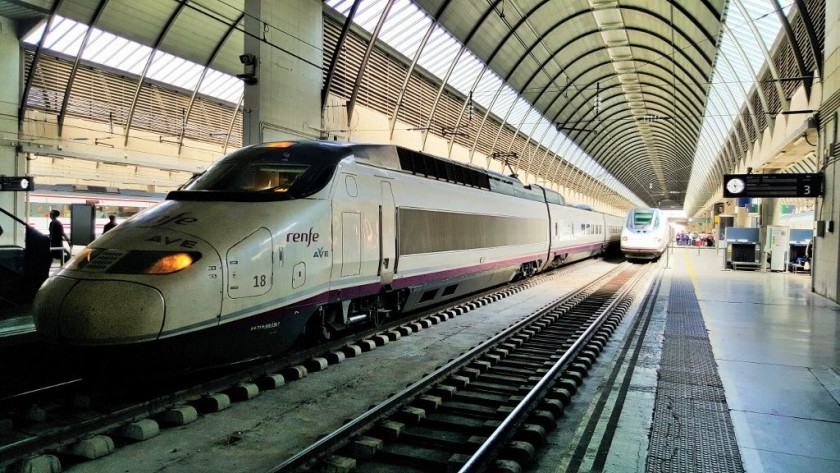
Travel summary:
The six things most worth knowing when travelling by any AVE service
(1) When boarding an AVE you must sit in the reserved seat(s) which will be specified on your ticket(s).
(2) The luggage allowance is a maximum of up to three pieces per person with a maximum total weight of 25kg (you must be capable of transporting your luggage)
(3) Non folding bikes which haven't been disassembled and cased can't be taken on board AVE services.
(4) The trains used for AVE services don’t convey restaurant cars, they only have bar/bistro cars
(5) On Monday to Fridays (and Sundays) a Premium Class is available when booking tickets to travel on AVE trains, the seating is the same as 1st/Confort class, but Premium Class includes a complimentary meal - similar to that served in Premium class on airlines.
(6) AVE services are one of only two Spanish train services on which Premium Class tickets can be booked, despite Premium Class tickets also having specific terms and conditions.
The different types of train used for AVE services
When booking tickets to travel by AVE services, it isn't possible to ascertain which specific type of train are being used for a departure.
Which is a pity as the on-board ambience differs significantly between the types of train.
So the notes below can only be a guide, particularly as the types of train being used per route is due to be changed over the coming years.
On the routes summary below, the notes such as 'few departures' and 'most departures' are referring to the AVE departures only.
Other types of train are also used on many of these routes.
The AVE 100 trains

The SMTJ guide to travelling by these trains.
Routes
- Madrid ↔ Cordoba - Sevilla (most departures)
- Barcelona - Girona ↔ Perpignan - Narbonne - Montpellier - Nimes - Valence TGV - Lyon
- Madrid - Zaragoza - Barcelona - Girona ↔ Perpignan - Narbonne - Montpellier - Nimes - Avignon TGV - Marseille
These trains aren't typically scheduled to be used for any other high-speed service on the Madrid - Zaragoza - Barcelona - Girona route
The AVE 103 trains

The SMTJ guide to travelling by these trains.
Routes
- Madrid - Cordoba - Malaga (a few departures)
- Madrid - Zaragoza - Barcelona - Girona - Figueres (most departures)
They are typically always used for the the faster departures on this route, so if you take a non-stop Renfe train between Madrid and Barcelona, you will be likely travelling on this type of train.
The AVE 102 / 112 trains

The SMTJ guide to travelling by these trains.
A significant feature of these trains is that most of the seats in both the 1st and 2nd class seating saloons are airline style and close to all of them can be rotated before the start of each journey, so that they face forwards.
So these trains have a higher percentage of forward facing seats than the other trains used for AVE services, but fewer table seats.
Routes
- Madrid ↔ Cordoba - Malaga (most departures)
- Madrid ↔ Albacete - Alicante (most departures; the trains which don't travel beyond Madrid)
- Madrid ↔ Albacete - Murcia (all departures)
- Madrid ↔ Valencia - Castellon de la Plana (most departures; the trains which don't travel beyond Madrid)
- Madrid ↔ Granada (all departures)
- Malaga / Seville - Cordoba ↔ Zaragoza - Barcelona (all Renfe departures)
- Malaga / Seville - Cordoba ↔ Valenica
- Granada ↔ Zaragoza - Barcelona (all departures)
- Madrid ↔ Zaragoza - Barcelona - Girona - Figueres ( a few departures)
-Madrid ↔ Zaragoza - Huesca - Valencia ↔ Madrid ↔ Valladolid - Leon (- Oviedo - Gijon) (some departures)
- Alicante - Albacete ↔ Madrid ↔ Valladolid - Leon (- Oviedo - Gijon) (some departures)
The 730 (Alvila) trains
These trains used to be sdesignated as Alvia as they connected Madrid with destinations in north-west Spain prior to the completion of the high speed line between Zamora and Ourense.
Now that this high speed line has been fully opened, they have been partially designated as AVE trains, as they don't now need to leave the high-speed lines when taking these routes.
The SMTJ guide to travelling by these trains (when used on Alvia services)
They are used for some AVE departures on all of these routes:
- Madrid - Zamora - Ourense - Santiago de Compostela - A Coruna
- Madrid - Zamora - Ourense - Santiago de Compostela - Pontevedra - Vigo
The Talgo Avril trains
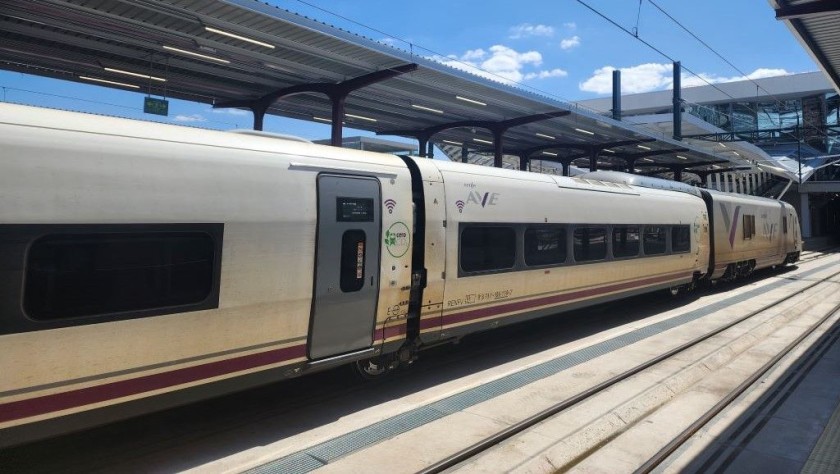
The SMTJ guide to travelling by these trains.
Note that these trains are radically different to the other trains used for AVE services, they have 3+2 seating across the aisle in Estander / 2nd class and 2+2 seating across the aisle in Confort / 1st class,
Routes:
- Madrid - Zamora - Ourense - Santiago de Compostela - A Coruna (some departures)
- Madrid - Zamora - Ourense - Santiago de Compostela - Pontevedra - Vigo (some departures)
- Madrid - Valladolid - Leon - Oviedo - Gijon (possibly all departures)
- Castellon de la Plana - Valencia - Madrid - Valladolid - Leon - Oviedo - Gijon (possibly all departures)
- Alicante - Albacete - Madrid - Valladolid - Leon - Oviedo - Gijon (possibly all departures)
- Madrid - Vallodolid - Burgos (the trains which don't travel beyond Burgos) (some departures)
Note that a few departures on the Madrid ↔ Alicante and Madrid ↔ Valencia - Castellon de la Plana routes are by these trains.
This second version of ShowMeTheJourney is exciting and new, so we are genuinely thrilled that you are here and reading this, but we also need your help.
We’re striving not to let anything get in the way of providing the most useful service possible, hence a facility has been set up with DonorBox which can be used to support the running costs and make improvements.
Instead of advertising or paywalls, your financial support will make a positive difference to delivering an enhanced service, as there’s a lot of ideas which we want to make happen.
So if you have found the info provided here to be useful, please consider saying thank you.

This is one of more than 100 train travel guides available on ShowMeTheJourney, which will make it easier to take the train journeys you want or need to make. As always, all images were captured on trips taken by ShowMeTheJourney.


